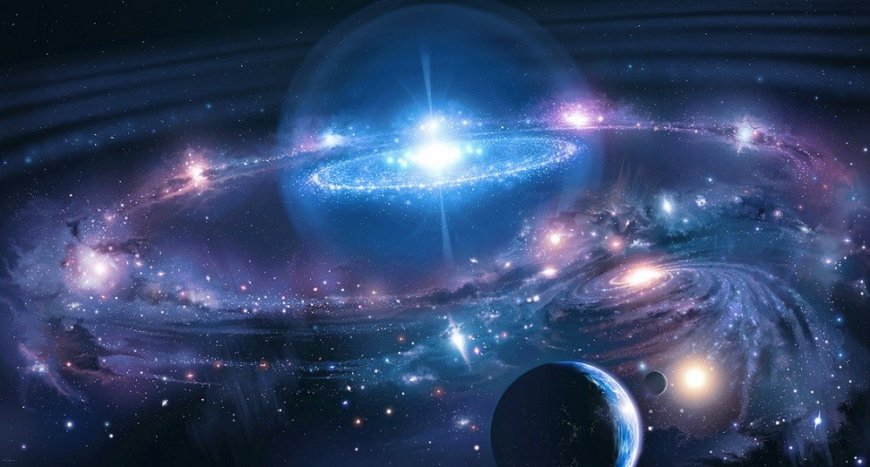Amazing universe: 10 extraordinary facts about space

Do you like looking at the stars? True, they are fascinating? And regardless of age, everyone is interested in watching their flicker from time to time. And when we see a shooting star, most of us make a wish! However, we do not often think that maybe someone somewhere is watching the light from our star - the Sun, and in general - as everything is arranged. extraordinary facts about space.
Here are the 10 most interesting facts about space that you probably didn't know about:
- The earth is really huge, and once was vast. It took Fernando Magellan (1480-1521) 3 years to make the first round-the-world trip in history. Thanks to the invention of the steam engine, the distance was reduced: in 1889, 22-year-old journalist Nellie Bly circled the globe in 72 days - she repeated the path traveled by Vileas Fogg, wanting to prove that Jules Verne's famous novel is not fiction. Eventually, jet technology changed the world altogether. It will take less than two days for a liner flying at 900 km / h to orbit the Earth. Well, the Vostok-1 spacecraft with the world's first astronaut on board circled the planet in just 108 minutes.
- But to finally understand the true size of the Earth, it is necessary to compare it with other space objects. To fly around Jupiter (inside this giant would fit 1 320 planets the size of Earth), the same liner will need 21 days, and to fly around the Sun - more than six months.
- Our galaxy has 400 billion stars. A lot, right? But let's understand in more detail. If you suddenly set a goal to count all the stars of the Milky Way, you will need 12 thousand years! And this is just one of millions of galaxies! And now we know about 1 million 600 thousand galaxies, one of which is our Milky Way.
- Space can be safely compared to a time machine. This is due to the fact that we do not see the objects themselves, but the light from them: reflected or radiated. Always. The light from the Sun reaches us in 8 minutes, so we always see the Sun as it was 8 minutes ago. And the most distant space object we can see from Earth is a galaxy with the mysterious name z8_GND_5296. We see it as it was 13.5 billion years ago, that is, at a time when the solar system did not even exist (the age of the solar system is "only-by-only" 4.5 billion years).
- The nearest star to us, if we do not take into account the Sun - Proxima Centauri. The distance to it is 4.24 light years. You can fly to Proxima on a liner in just 5 million years. If humanity, having just appeared 2 million years ago, had immediately gone to Proxima using a plane, at this point it would not have overcome half of this path!
Must Read: Interesting training with new technologies
- The diameter of the Milky Way galaxy, on the periphery of which is our solar system, is about 100 thousand light years. The size of the largest known galaxy today - IC 1101 - is 20 times larger - 2 million light years. As for the entire universe, its size is estimated at 156 billion light years. The distance is impressive!
- Our planet is always in motion. At a speed of 1 thousand 674 km / h, it rotates around its axis and at a speed of 107 thousand 280 km / h (29.8 km / s) - around the Sun. And it is worth considering the movement of the solar system, which moves in an orbit around the center of the galaxy at a speed of 830 thousand km / h (230 km / s), and the galaxy itself flies in space at a speed of 2 million km / h (552 km / s) . If the planes could develop the same speed, the journey from Kiev to Simferopol would take less than 2 seconds. And it would be very convenient!
- Almost all of us have seen and know lead well, it is chosen as a sinker for fishermen. But much heavier sinkers would come from the matter that makes up neutron stars. If you fill a teaspoon with this substance, its weight would be 110 million tons - as much as the 20 pyramids of Cheops weigh! If this substance hit the surface of our planet, it would, under the action of gravity, break through and reach the Earth's core!
- The surface area of ‹‹the Sun the size of a matchbox shines as brightly as 3 million candles. But this is not so much compared to the huge amount of energy that accompanies the explosion of a supernova. In the first 10 seconds after the explosion, the supernova emits more energy than the Sun in 10 billion years. The brightness of such stars easily obscures the light of the galaxies in which they erupted.
